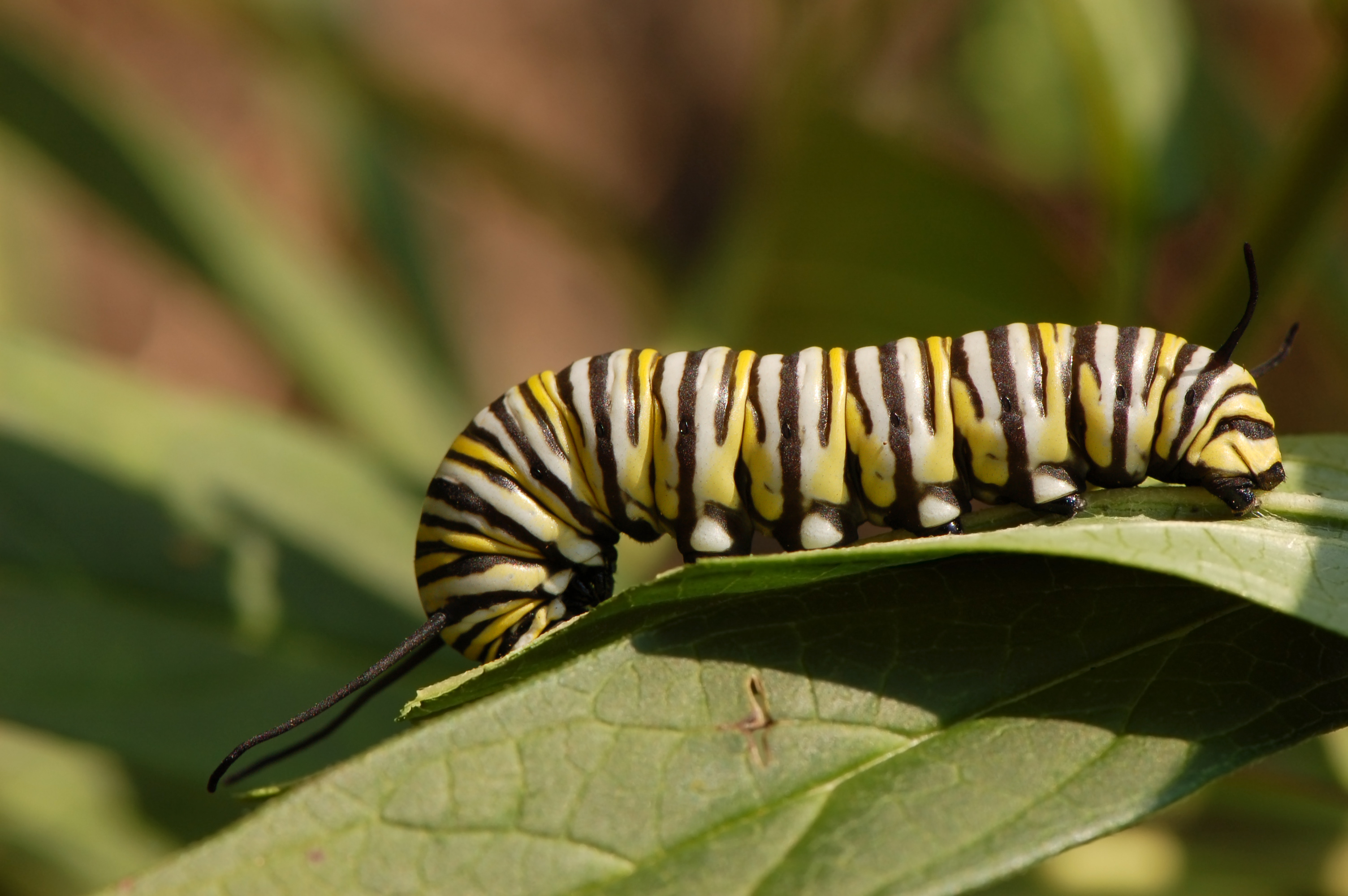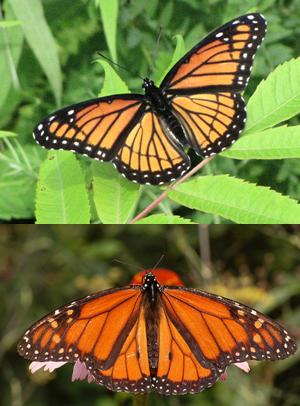The sight (and muted sound) of up to 100,000 Monarch butterflies hanging in large clusters from the branches of a few eucalyptus trees is both awe-inspiring and puzzling. How and why do these magnificent insects appear in such great numbers at specific locations? The Sperling Preserve at Ellwood Mesa in Goleta is home to the Coronado Butterfly Preserve – one of the largest “over-wintering” sites for Monarchs in the United States.
Monarchs (Danaus plexippus) can travel up to 3000 miles using high-level jet streams. In the fall, the western population of U.S. Monarchs comes from as far away as British Columbia to the California Coast in order to over-winter at over 200 specific sites to which they return year after year. From October to February, the Monarchs go into a state of hibernation or “reproductive shutdown” known as diapause, during which they survive on the body fat they accumulated as caterpillars. As winter ends, the Monarchs become more active and return north to lay their eggs and continue the cycle, moving up into California’s Central Valley and Sierra Nevada foothills, as well as north to Oregon and Washington. By the end of the summer, after three generations have passed, some offspring end up as far north as British Columbia before repeating the migration back to the coast.
The Monarch population east of the Rocky Mountains migrates to over-wintering sites in the Mariposa Monarca Biosphere Reserve in the Mexican states of Michoacán and México. This year, the low numbers and distribution of Monarch butterflies returning to the United States from their winter home in Mexico alarmed butterfly experts. An unusually damp and cold February in the forests of Michoacán state is believed to have been responsible for the death of more than half of the wintering Monarch population; however, conditions are considered favorable for a rapid recovery.
But how do Monarchs find their way back to specific sites such as Ellwood or reserves in Mexico in the first place? No one knows or agrees – some entomologists believe that the butterflies navigate by using the sun as a compass; some suggest that they use a magnetic compass in conjunction with an internal body clock; and some claim that they are guided by a combination of ultraviolet light detection, geographic cues, and a “biological clock.” Whatever the method, when Monarchs flock by the thousands to the eucalyptus groves on the Ellwood Mesa each winter, people do the same.
The peak over-wintering time for the Monarch butterflies ranges from December through February. They begin arriving as early as October and are usually gone by the end of March. To find the Coronado Butterfly Preserve from Highway 101, exit Storke Road/Glen Annie and head south (away from mountains). Turn right on Hollister Avenue, drive about 1.2 miles and take a left on Coronado Drive. The entrance to the Preserve is at the end of Coronado Drive. Park at the end of the road, walk into the gully, turn right and walk a few hundred feet to a clearing. The monarchs will be clustering in a small ravine to the northwest, 30 to 80 feet up in the trees (no fee). Watch, wonder, and be wowed!





